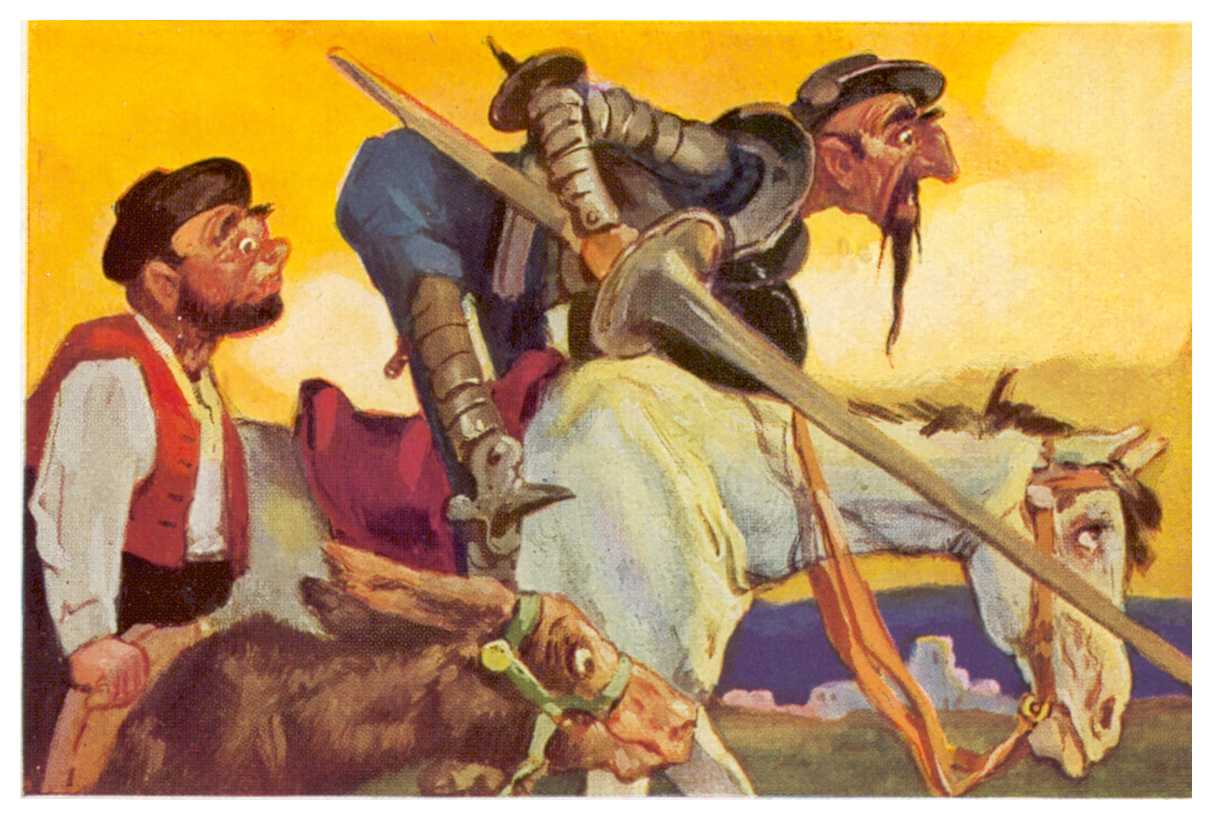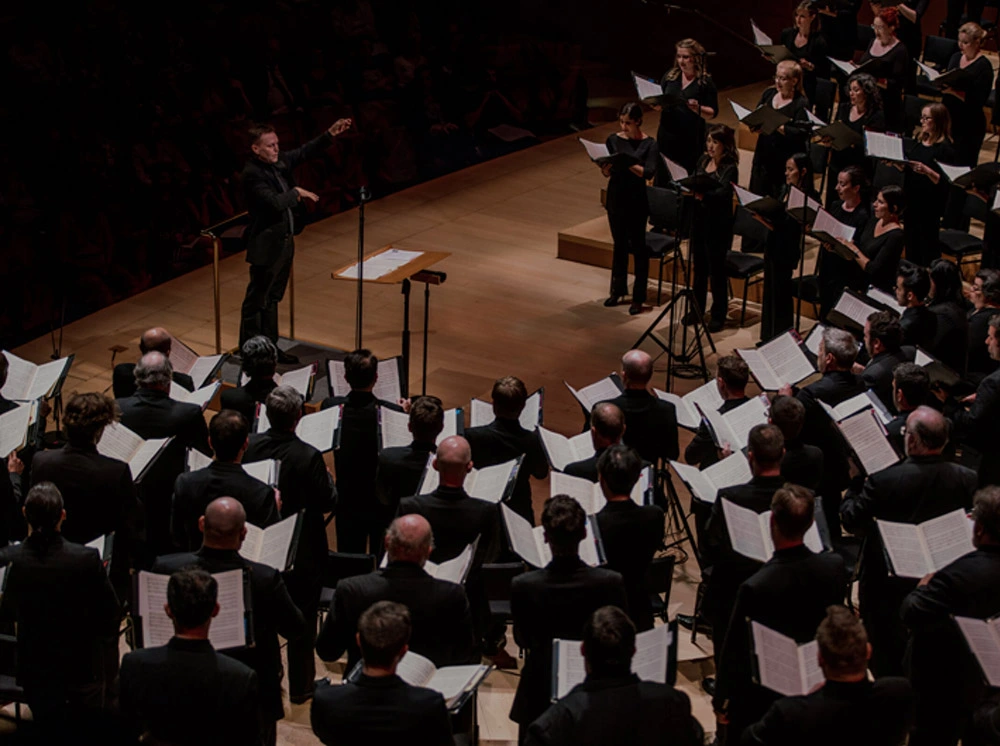- 2017-10-17
"The Smiling Death": Program Notes for Día de los Muertos
Learn more about the spirited works selected by our guest conductor María Guinand for our Día de los Muertos concert taking place in Walt Disney Concert Hall on October 29.
BY THOMAS MAY
We are just days away from the Día de los Muertos holiday, which has in recent decades taken on an increasing presence across the United States. The imagery associated with it — the vibrant colors, candles and marigolds, decorated ofrendas (home altars paying homage to deceased love ones), sugar skulls, pan de muerto, skeleton-musicians, and the like — is especially familiar in Los Angeles, but the rich history of the holiday and its significance are not as well known among the general public.
We are just days away from the Día de los Muertos holiday, which has in recent decades taken on an increasing presence across the United States. The imagery associated with it — the vibrant colors, candles and marigolds, decorated ofrendas (home altars paying homage to deceased love ones), sugar skulls, pan de muerto, skeleton-musicians, and the like — is especially familiar in Los Angeles, but the rich history of the holiday and its significance are not as well known among the general public.
For one, it should not be mixed up with neighboring Halloween, though, like the latter, Día de los Muertos originated from a blend of pre-Christian and Christian elements. Most closely associated with Mexico, it is rooted in pre-Columbian ritual, which became overlaid with beliefs and symbols of the Catholic Church. This syncretism influenced guest conductor María Guinand’s curation of choices for her program — all of which are by living composers, with three exceptions. “Otherwise, I could have gone back to colonial music of the Baroque or pre-classical period in Hispanic America to find these themes, but the focus would have been on the religious values of Christianity and Catholicism,” she explains. “I think Día de los Muertos has to do much more with this syncretism that exists in Latin America and that has flourished after independence. It combines different views and approaches. So I wanted to create a program that would be colorful and show the soul of the Latin American people.”
Reflection on our ancestors and honoring our departed loved ones is at the heart of Día de los Muertos — not in a state of sadness, but with a spirit that embraces celebration: death, as Guinand remarks, perceived “not as a moment only of grief but also as an encounter with the other world, that mixes nostalgic happiness and the tragic at the same time: hence ‘the smiling death.’” The tragic and the celebratory stand as counterparts for each half of the program she has devised.
.jpg)
Composer Alberto Ginastera and friend.
We open, then, with one of the landmark composers of Latin America. Last year’s celebrations of his centenary brought Alberto Ginastera (1916–1983) a bit more into focus, though too much of this Argentine composer’s music remains unaccountably neglected. His Op. 14 Lamentaciones del Profeta Jeremías (Lamentation of Jeremiah) is from Ginastera’s early period and is one of only three choral pieces he wrote. At the time, he had come to notice for his ballet music. Dating from Ginastera’s exile in the United States for his anti-Perón protests, Lamentaciones was written in 1946, when the young composer was being mentored by Aaron Copland at the Berkshire Music Center. Ginastera chose three texts from the “weeping prophet” Jeremiah mourning the Babylonian exile. Influences from Bartók and Stravinsky are especially noticeable in the grieving intensity of the first part, “O vos omnes,” which pours out in fierce dissonances, emphasizing the specter of death and depicting an angry God. In contrast, a Renaissance flavor dominates in the despairing “Ego vir videns,” which begins in meditative, solemn despair. The final “Recordare, Domine” turns a corner emotionally, becoming, as Guinand remarks, a prayer expressing “hope and possibilities for living” as the tempo speeds up for the joyous final section.
.jpg)
Composer Alberto Ginastera and friend.
We open, then, with one of the landmark composers of Latin America. Last year’s celebrations of his centenary brought Alberto Ginastera (1916–1983) a bit more into focus, though too much of this Argentine composer’s music remains unaccountably neglected. His Op. 14 Lamentaciones del Profeta Jeremías (Lamentation of Jeremiah) is from Ginastera’s early period and is one of only three choral pieces he wrote. At the time, he had come to notice for his ballet music. Dating from Ginastera’s exile in the United States for his anti-Perón protests, Lamentaciones was written in 1946, when the young composer was being mentored by Aaron Copland at the Berkshire Music Center. Ginastera chose three texts from the “weeping prophet” Jeremiah mourning the Babylonian exile. Influences from Bartók and Stravinsky are especially noticeable in the grieving intensity of the first part, “O vos omnes,” which pours out in fierce dissonances, emphasizing the specter of death and depicting an angry God. In contrast, a Renaissance flavor dominates in the despairing “Ego vir videns,” which begins in meditative, solemn despair. The final “Recordare, Domine” turns a corner emotionally, becoming, as Guinand remarks, a prayer expressing “hope and possibilities for living” as the tempo speeds up for the joyous final section.
Rodolfo Halffter (1900-1987) left Madrid at the end of the Spanish Civil War and emigrated to Mexico. Tres Epitafios (Three Epitaphs), composed between 1947 and 1953, reveals the composer’s desire to remain in touch with his native country’s cultural legacy: it sets verse excerpts from Miguel Cervantes’ Don Quijote. Halffter structures the work as a triptych of choral epitaphs from the tombs of Don Quijote (no. 1), Dulcinea (no. 2), and Sancho Panza (no. 3). Guinand says that in her selection of repertoire for the program, she also wanted to pay homage to “good literature, composers who set the work of good poets.” Halffter is mostly known for his compositions for piano, but this early work is fluently written for a cappella chorus, with straightforward, homophonic textures and harmonies; brief soprano and tenor solos accentuate the epitaph to the Knight of the Sorrowful Countenance’s beloved Dulcinea.

Cervantes' Sancho Panza & Don Quijote, illustration by Stefan Mart.

Cervantes' Sancho Panza & Don Quijote, illustration by Stefan Mart.
Born in 1938 in Santa Isabel de las Lajas, Cuba, Calixto Álvarez studied for some years in the United States and Poland before retuning to Cuba. He is especially known as a composer for the theater. Réquiem Osun originated in 1986 as an accompaniment to a staging in Havana of Réquiem por Yarini, the best-known play by Cuban playwright and singer Carlos Felipe. The play was written in 1955–60 and is based on the dramatic demise in 1910 of the Cuban pimp, politician, and racketeer Alberto Yarini y Ponce de León. In keeping with Felipe’s mixture of sources — “Greek tragedy, Spiritism, and the syncretic Yoruba traditions of Cuba,” according to the Spanish literary scholar Robert Lima — Álvarez sets Yoruba religious chant together with the Latin of the tradition Catholic Requiem liturgy. Osun (or Oshun) is a female manifestation of the deity in the Yoruba religion, associated with fertility, love, and destiny. Musically as well, Álvarez juxtaposes Afro-Cuban rhythms and traditional Yoruban chants (in the creolized Lucumí dialect used for Santería rituals) with European choral idioms. The result is a very socially aware piece, Guinand points out, which is “syncretic, innovative, and intercultural, it expresses this fusion of elements in a very simple but effective way.” One challenge it poses to the singers is “to change from the lyrical singing of Western tradition, experimenting with chest and open voice and other colors.”
Miguel Astor, born in 1958, comes from María Guinand’s native city of Caracas. Concierto para Coro is a recent work, dating from 2016. Its three parts set poems by Federico García Lorca, including two from his collection Romancero Gitano (Gypsy Ballads), published in 1928. We hear the third part, “Muerte de Antoñito El Camborio,” in which Astor uses mixed chorus, a solo tenor, and body percussion, evoking chant and Andalusian lament. The poem depicts the murder of the young Roma bullfighter. “The essence of Lorca’s poem is a very dramatic and very Spanish way of looking at death,” explains Guinand. Antoñito El Camborio had been captured by the Civil Guard before arriving in Seville (as described by the poem set in the second part); now he falls victim — “three spurts of blood” — to the piercing daggers of his cousins: “What they did not envy in others/now they envied in me.”
Following these four musical visions of death and tragedy, the program turns toward the celebratory side of Día de los Muertos, beginning with a composer from outside the Latin American cultural space. Ola Gjeilo, born in 1978 in Norway and currently based in New York, is acclaimed for his choral music. For Guinand, he offers a fascinating perspective on the conflation of death and celebration. Gjeilo’s Unicornis Captivatur (The Unicorn Is Captured) additionally involves a variation on the return to medieval sources (chants, the Requiem) that is one of the program’s threads. Dating from 2001, Unicornis Captivatur was inspired by the composer’s interaction with early music. The text comes from a collection of medieval chants, the Engelberg Codex, completed around 1400 and in the possession of a Swiss monastery. The circle of life this menagerie of medieval creatures traces drew from Gjeilo music of awe, joy, and triumph.
Another sense of celebration is conveyed by Jubiabá by Carlos Alberto Pinto Fonseca (1933–2006). Like the Réquiem Osun, Jubiabá reflects the Africa-derived Yoruba heritage brought over to the New World by slaves. Fonseca composed the piece in 1963 as a choral evocation of Yoruba ritual or macumba (a catch-all word covering the practices of syncretic religions in the composer’s native Brazil — curiously, it can also refer to a musical instrument). More specifically, Jubiabá pays tribute to the Afro-Brazilians (mostly originating in Nigeria and Benin) who developed the Candomblé religious tradition. “Jubiabá” here is the high priest who presides over the ceremonies.
Striking a humorous note in our program is El Guayaboso (The Liar) by Guido López-Gavilán, a Cuban composer and conductor. Born in 1944, he was sent abroad to Moscow in the then-Soviet Union to study at the Tchaikovsky Conservatory, where he graduated in 1973. El Guayaboso, which was first composed in the 1960s for a youth chorus, is what the composer terms a “choral guaguancó” referring to the most popular of the types of rumba, associated “almost always very jovial spirit and recount[ing] a humorous or festive happening” with only percussion accompaniment. In the 1980s, López-Gavilán made this arrangement for mixed chorus, which asks the singers to vocalize the percussion parts. His text comes from memories of poems his grandmother used to read him: “I remembered these disparate rhymes, which probably emerged in a country fiesta in Matanzas province in the last years of the nineteenth century, and they appeared many years later in the text of El Guayaboso.”

Composer Alberto Grau and his wife, our Guest Conductor, María Guinand.
Venezuelan Alberto Grau, who was born in 1937, founded the Schola Cantorum de Venezuela in 1967 — a choral society central to Venezuela’s educational system, of which Guinand currently serves as chief conductor. Grau has been especially influential on the contemporary choral scene as both a composer and conductor. Commissioned by the Riga Youth Choir Kamer in 2010, Salve al Celeste Sol Sonoro sets two stanzas of a poem by the trailblazing Nicaraguan poet Rubén Darío (1867–1916). The original poem is actually titled Programa Matinal (Morning Program), but Grau has taken the first stanza’s final line to name his composition: “Hail to the sonorous celestial Sun!” Grau begins with the keyword “Sol” (Sun), sung by the divided choir, against which a baritone solo emerges with the first verse. The score even includes a part for “hands/feet,” the rhythmic line for the feet to be marked “with the heels, without lifting the toes.” The physicality of the piece extends to body movement, with instructions for how to choreograph shoulders and arms across the changing meters. Celebration is here allied to love and gratitude for life’s beauty.
In conclusion is the piece whose title inspired María Guinand to create this program juxtaposing death with celebration. Diana Syrse is a composer and singer from Mexico City. Born in 1984, she has studied at CalArts and the Hochschule für Musik und Theater in Munich. La Muerte Sonriente (The Smiling Death) was commissioned in 2013 by the Túumben Paax Contemporary Vocal Ensemble and adapted the next year for six voices and “Pre-Hispanic percussion” for the Breakout Ensemble. Syrse wrote the text as well as music, and her piece takes us back to the Mexican origins of Día de los Muertos. Guinand admires the invention of Syrse’s use of onomatopoetic sounds and virtuoso writing for the voice, mingling fast-moving textures against lyrical lines. The instrumentation Syrse calls for includes two ayoyotes (percussion instrument from the Aztecs), tabor tarahumara (a kind of tambourine from the indigenous people of northern Mexico), Aztec death flute, and ocarina.
"The word death is not pronounced in New York, in Paris, in London, because it burns the lips,” Octavio Paz, the Nobel Prizewinning poet, once wrote. "The Mexican, in contrast, is familiar with death, jokes about it, caresses it, sleeps with it, celebrates it, it is one of his favorite toys and his most steadfast love.”
Thomas May, program annotator for the Los Angeles Master Chorale, writes about the arts and blogs at memeteria.com
<a class="btn btn-primary" data-cke-saved-href="https://tickets.lamasterchorale.org/single/SYOS.aspx?p=4398" href="https://tickets.lamasterchorale.org/single/SYOS.aspx?p=4398" "="">BUY TICKETS



